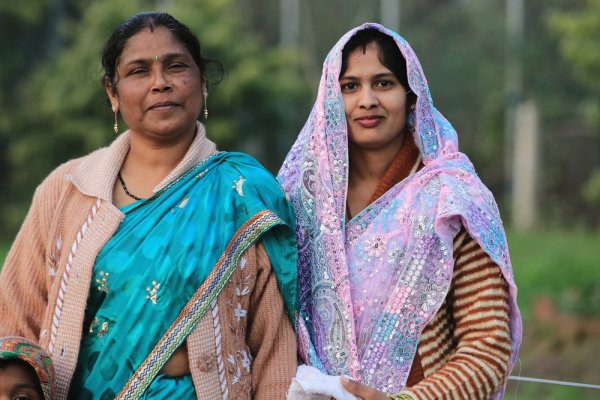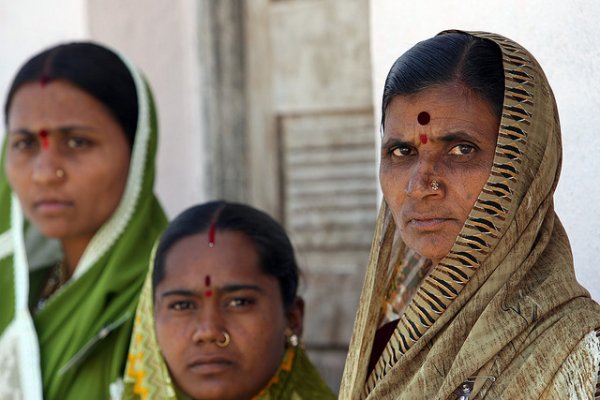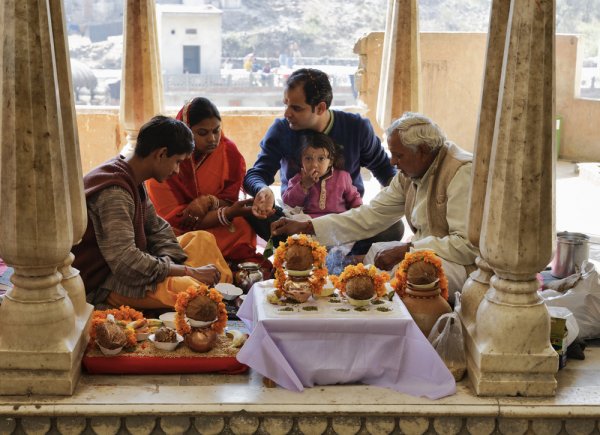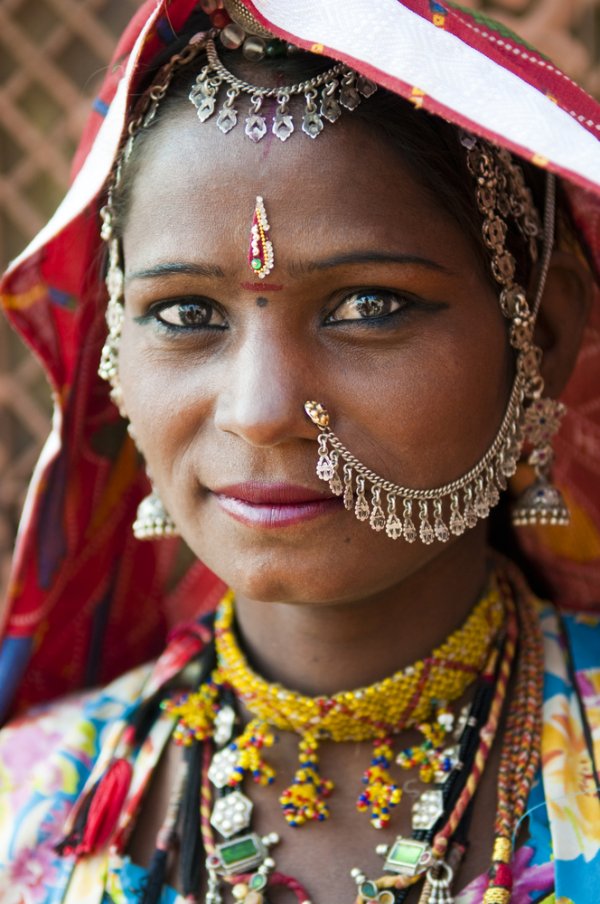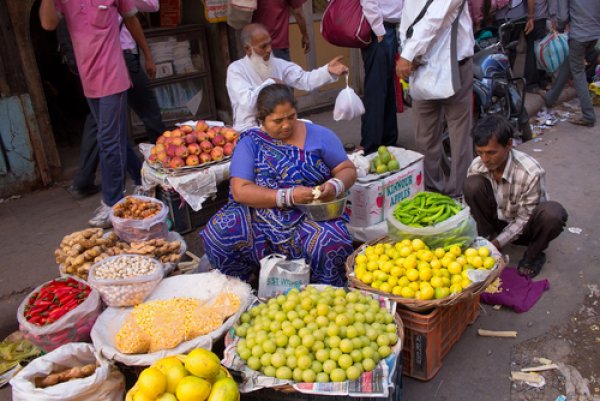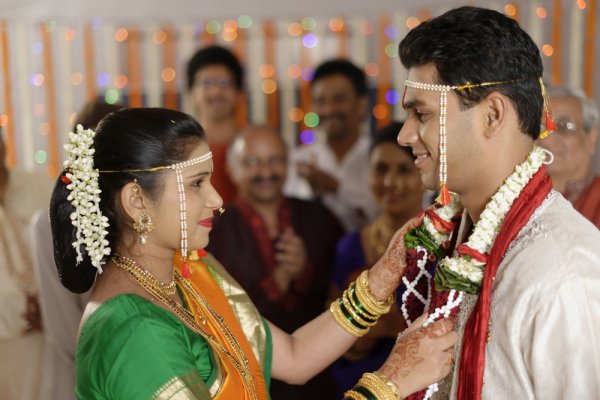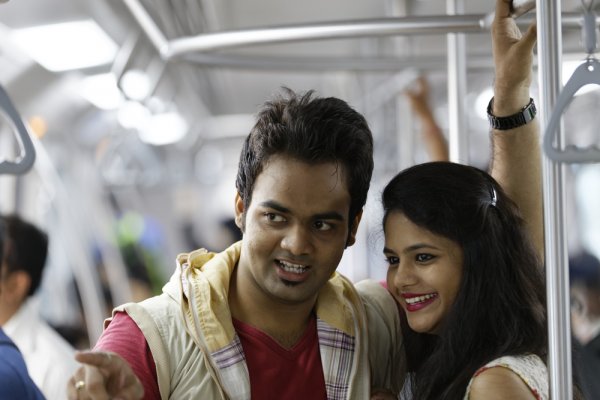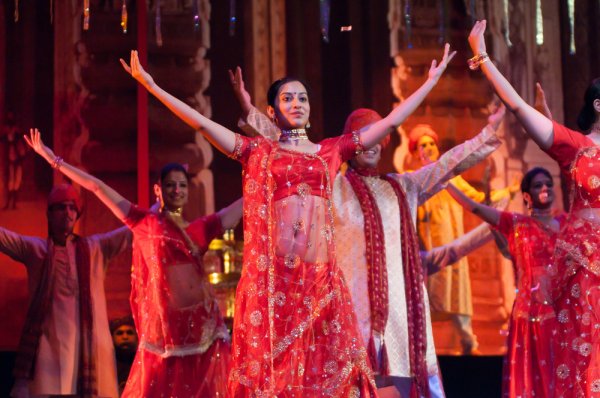Culture and Society: Women in Culture
General
India, an extremely diverse country with innumerable linguistic, ethnic, and religious groups, presents the position and perception of Indian women among these groups in a very complex manner. Generally speaking, however, participation of Indian women in all spheres of society has seen a tremendous increase since the liberalization of the economy. Although society looked upon women primarily as wives and mothers (and still does in many cases), change is sweeping across the Indian social landscape, especially in urban areas, and society sees a large and increasing number of women in terms of what they do, rather than in terms of the family, class, caste, or religion to which they happen to belong.
India remains a strongly patriarchal and male-dominated society. Manu, the semi-mythical law-giver of the Hindus, had the following to say about women in his Manusmriti (Laws of Manu): "Her father protects (her) in childhood, her husband protects (her) in youth and her sons protect (her) in old age; a woman is never fit for independence."
Paradoxically, Indian mythos and culture has also exalted woman as the “feminine divine” and has worshipped her from time immemorial in various ways—as Lakshmi (goddess of wealth), Saraswati (goddess of learning, music, and poetry), as Kali (goddess of death and destruction), and as Sakthii and Maya (primal force and cosmic illusion, respectively).
However much India exalts women in myth and imagination, in real life they have experienced abasement in equal measure. Various forms of domestic violence against women in India continue to be a major problem, with statistics indicating that one in every five married women suffers from abuse. An extreme form of abuse that continues to this day, for example, is the practice of “dowry-deaths”—the murders of newly-married women, disguised as suicides or accidental deaths. The woman’s inability to bring in additional dowry seals her fate.
As these rare practices wane, however, an increasing number of educated women play major roles in decision-making at home and receive the necessary freedom to pursue careers and participate in other arenas of public life.
Social and economic factors, along with the caste system, play a major role in determining the position of Indian women. The position of women belonging to the upper social and economic strata of society tends to be on par with the men. Very visible, they represent the new face of the “modern” Indian woman. On the other hand, traditional male-dominated attitudes govern women from the lower classes, limiting their freedom and making them dependent on the men for all their needs.
The position of Indian women has been undergoing change for a long time, with the pace of that change increasing dramatically during recent times. The government has initiated a number of laws and measures to protect women’s rights and encourage their participation in public life. This change has been more visible in the urban regions as compared to the rural areas. Traditional practices that were highly damaging to women, such as child marriage, temple prostitution and Sati (the practice of burning a widow alive on her husband’s funeral pyre), have been all but completely eliminated.
Into the 21st century, women held 12 percent of seats in the country's Parliament. An on-going movement works to reserve for women 30 percent of seats in Parliament and state legislatures.
Despite the low number of women legislators, many prominent examples of able and strong women who have displayed their talents in the political arena continue to emerge. None is more famous than former Prime Minister Indira Gandhi who was assassinated in 1984. Not only did she prove a very powerful Prime Minister, but she, as leader of the Non-Aligned Movement, championed the cause of developing countries. In the words of one of her critics, she “bestrode the Indian political scene like a Colossus.”
The Italian-born Sonia Gandhi, wife of the slain former Prime Minister Rajiv Gandhi and leader of the ruling Congress party, has become the most powerful woman in India in the early 21st century. In the powerful Southern state of Tamil Nadu, former movie star and two-time chief minister, J. Jayalalitha, stamped her indelible mark on the state’s politics.
Nearing the third decade of the 21st century, 35 percent of Indian women are in the workforce. In the medical field, women comprise almost the entire Indian nursing workforce. The population of India’s trained female doctors, surgeons, scientists, and professors exceeds even that of the United States. The business sector has seen a steady growth in the number of women entrepreneurs, and current estimates indicate that women comprise 10 percent of all entrepreneurs in India.
Rural Indian women work extensively in the fields and constitute a large portion of the workforce in the agricultural sector. Access to various educational and employment opportunities and to facilities providing health care remain limited. Society subjects many rural women to violence and discriminatory practices. This remains especially true in the case of Dalit women (formally known as “untouchables”) in several states of India, who, by force, suffer through some of the worst indignities, humiliations, and sundry other oppressions their upper-caste masters regularly mete out to them. Urban women, educated and “modern” in attitudes and dress, make up a large part of the workforce in the country’s various industrialized sectors. The gap between urban and rural women in India remains quite large.
India serves as home to an amazing number of ethnic groups, making it one of the most heterogeneous countries in the world. The position of women in various ethnic sub-cultures varies widely. The indigenous tribal people live lives of chronic poverty and lack access to even the most basic of amenities. On the other hand, certain ethnic tribal groups in the North-Eastern region of India, like the Khasis of Meghalaya for example, live in matriarchal societies where women serve as heads of the household. Matriarchy also remains prevalent among the relatively affluent Nair community of the state of Kerala, where women (and their brothers) wield most of the power.
Indian women generally dress conservatively, but colorfully, in saris, churidars (a three-piece dress with pajamas, knee-length top, and shawl), and forms of regional dress. In urban areas, fashion-conscious women wear anything from Western to “modified Indian” to a fusion of both Western and Indian styles.
Legal Rights
Indian women have the same legal rights as men in all respects. India granted women the right to vote in 1950. Women can also drive cars and have rights to own and inherit property. Civil law as well as various religious laws pertaining to religious communities, however, govern inheritance matters: Hindu Joint Family laws, Sharia laws, and Christian marriage and inheritance laws. The Indian constitution accepts only the Sharia laws on marriage and inheritance, for Muslims.
Certain discriminatory-to-women provisions of the Christian inheritance laws have been successfully challenged in the Supreme Court of India by an intrepid woman, Mary Roy. Women have the right to initiate divorce. They also have the right to lay claim to custody of the children. For Muslim women, Sharia laws regarding divorce apply. Abortion, almost totally legal in India, can be resorted to even for instances like contraceptive failure. Laws require a second medical opinion for abortions conducted during the 12th to 20th week of pregnancy. Although abortion remains legally unavailable on request, women easily circumvent this, and authorities rarely prosecute infringements.
Indian women, faced with patriarchal prejudices, male chauvinism, and religious orthodoxy, have a powerful and reliable ally to safeguard their interests: the highly progressive Indian Judiciary.
Education
India’s laws guarantee women equal access to all educational facilities in the country. The average literacy rate for Indians is 79 percent, though for rural women it is closer to 56 percent and in general, men's literacy rates are higher than women's. This statistic, however, hides enormous disparities in the levels of women’s literacy in various parts of the country.
A majority of Indian girls complete their primary schooling. In the urban areas, most of them go on to complete their higher education as well. Schools in India generally follow the coeducational system, with boys and girls sharing the same classroom space, but many single-sex educational institutions also exist. Educated women have equal access to job opportunities. Although men dominate the higher levels of management, women are increasingly establishing a presence at top, decision-making levels of companies.
Dating, Marriage, and Family
Arranged marriages, fixed by parents, relatives, friends or professional matchmakers, typify the norm in most parts of India except for the North-Eastern states. Although many urban youth these days increasingly choose their spouses, many Indian women and men (even highly educated ones) remain wary of letting go of the arranged system of marriage.
Men and women in urban areas enjoy dating, with women meeting men at educational institutions and at social events such as weddings and festivals. Dating usually begins during the late teens. Intimacy among friends of the same sex and their open displays of affection (like holding hands, hugging, and putting arms around each other), likely mistaken for homosexuality by foreigners, have no such connotation. Indeed, such displays constitute an integral part of the dynamic of friendship in India.
The legal age for marriage in India is 18 for women and 21 for men. However, child marriages still occur in certain poor, least-developed states of India.
Women in India take care of the household, with urban wives playing major roles in decision-making. An increasing number of women are beginning to lead households in the absence of the men. Women also have the right to hold assets separately from their husbands although taking their husband’s names after marriage. In the event of a divorce, most women revert back to their maiden names.
In the event of a divorce, various religious laws, as well as civil laws, govern maintenance and alimony laws. Women, however, may claim support, and the men must provide it until a woman remarries. Civil laws, as well as Muslim personal laws (in the case of Muslims), apply regarding granting custody of children. Although women have the right to claim custody of the children, fathers also have equal rights to custody of minor children.
Childless women in India, especially those from rural areas, suffer heavy stigmas and face social scorn. In some areas, the number of children (especially male children) determines a woman’s social status. Polygamy remains legally and socially unacceptable in most parts of India. However, Islamic laws allow Indian Muslims to have up to four wives.
Health
India guarantees women equal rights in accessing healthcare and medical facilities. However, rural women in many parts of India still have limited access to health care. The maternal mortality rate was 130 deaths for every 100,000 live births nearing the third decade of the 21st century, with the infant mortality rate 30 deaths for every 1,000 live births. Women make most healthcare decisions only after consultation with their families, and often after obtaining the permission of their husbands. Urban women, however, may have more choices and decision-making power.
Indian women have easy access to birth control measures, although contraceptive usage remains quite low. Studies indicate that less than half of India’s married couples use any form of birth control, with almost two-thirds of women opting for female sterilization.
Interesting or Unusual Social Customs
Rural Indian girls who attain puberty are confined to their homes for a month, during which time families prohibit them from leaving the house or visiting temples. According to Hindu customs, women must not visit temples and other places of Hindu religious worship during their menstrual cycles. Indian brides almost always decorate their hands with intricate designs using henna or mehandi, a reddish-colored paste made from the leaves of the mehandi plant.
Statistical sources include:
Inter-Parliamentary Union, Women In National Parliaments
World Health Organization, Global Health Observatory Data Repository
World Bank, Databank
World Bank, Women, Business and the Law
US Central Intelligence Agency, World Factbook
United Nations Development Project, Human Development Report
Copyright © 1993—2025 World Trade Press. All rights reserved.

 India
India 